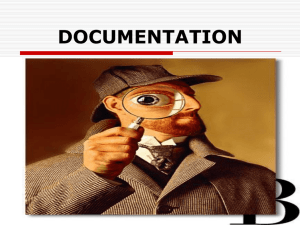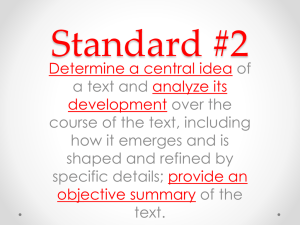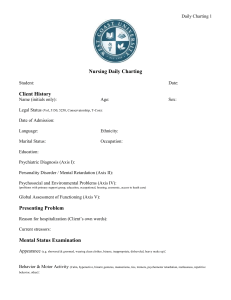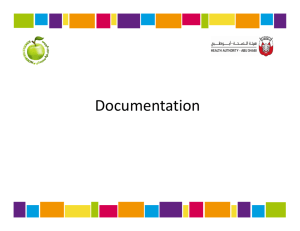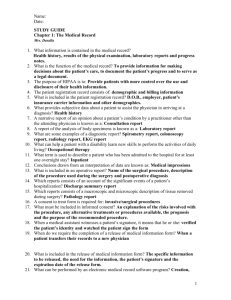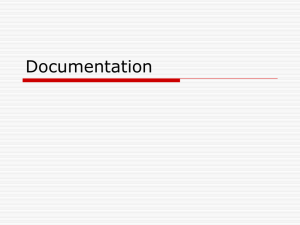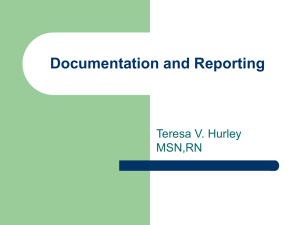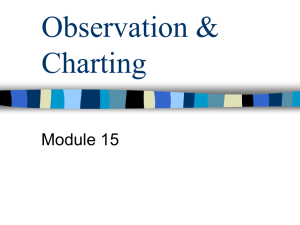Document it right: A Nurse*s Guide to charting
advertisement
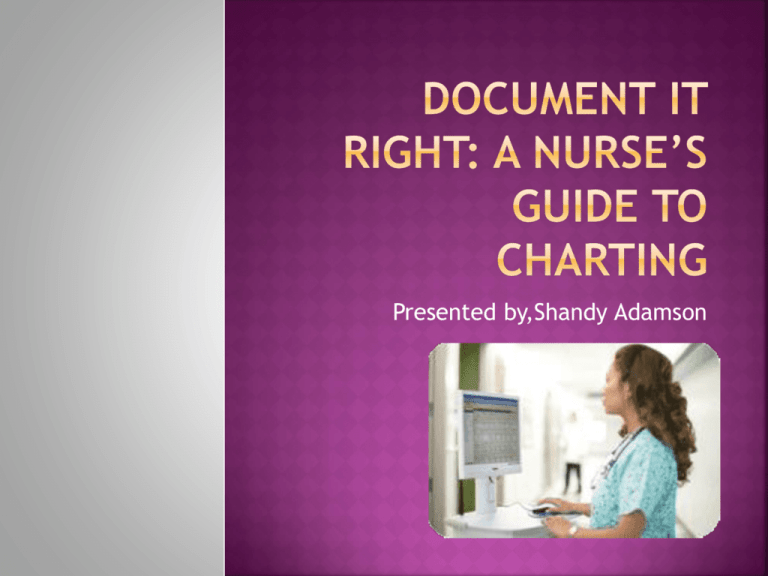
Presented by,Shandy Adamson Identify seven reasons as to why documentation is important Learn how to document properly Describe different document formats Learn how to document in different settings and in challenging situations Explain the importance of documentation in the court room Identify the advantages and disadvantages of computerized documentation systems Identify how to save time when documenting Why Documentation is Important? Coordination of care Accreditation and licensing Performance improvement activities Peer review Requirements for reimbursement Legal protection Research and continuing education Document accurately and objectively Get facts about situation before charting and don’t make assumptions Document clearly and thoroughly Note times carefully Don’t use block charting that covers a wide range of time Avoid assigning blame or calling attention to errors Avoid using terms associated with errors Fill out forms correctly, write in ink, sign each entry Use standard abbreviations For drug names use generic rather than trade names and spell drugs out correctly Write legibly and spell correctly Correct errors and omissions Cosign correctly Use caution when you countersign a subordinate’s chart entries Don’t document care given by someone else Follow correct procedures for late documentation Documentation Narrative formats or source oriented charting Problem orientated charting Focus charting PIE charting Charting by exception Fact charting Core charting Patient database Patient problem list Initial plan for each identified problem Progress notes Discharge summary Acute care documentation Long term documentation Documentation in homecare Patient must be confined to the home. Patient must need skilled services on an intermittent basis. Care must be reasonable and medically necessary. Patient must be under a physician’s care. Refusal of treatment or failure to follow restrictions Against medical advice Incident reports Advance directives Difficult patients How to document understaffing How to document negligent or unsafe practice Physician orders Unlicensed assistive personnel Laws and standards Legal basics Critical incidents Advantages of computerized documentation Store and retrieve information quickly, simply and reliably Update information consistently and efficiently Link sources of patient information Use standardized terminology Promote communication among health care workers Facilitate transmission of request slips and patient information between departments Protect patient confidentiality Provide legible and grammatically correct documentation Contain valuable data on patient populations Disadvantages of computerized documentation May scramble patient information if used improperly Can interfere with patient’s right to confidentiality if security measures aren’t followed May break down which causes important information to be temporarily unavailable May be expensive Can restrict the accuracy of information if the computer restricts vocabulary or phrasing Can increase documentation time if too few terminals are available Save time when you document Before documentation: right patient medical record and information Use nursing process to document Chart as soon as possible after you provide care Use flow sheets and bedside charting if possible Don’t repeat information Sign off with initials Habel, M. (2014). Document It Right: A Nurse's Guide to Charting. . Retrieved May 7, 2014, from http://ce.nurse.com/RetailCourseView.aspx?CourseNumber=60076&page =8&IsA=1

